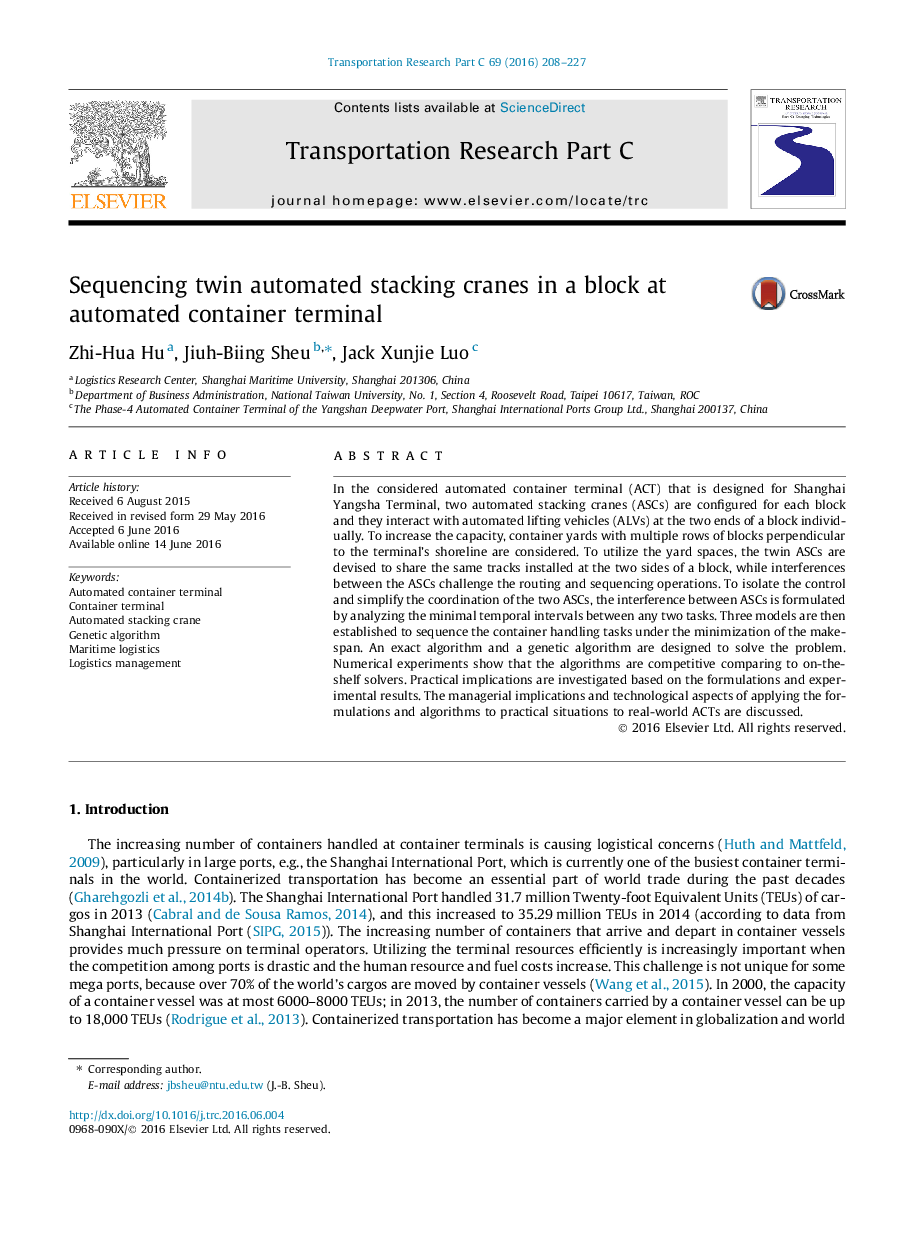| Article ID | Journal | Published Year | Pages | File Type |
|---|---|---|---|---|
| 524727 | Transportation Research Part C: Emerging Technologies | 2016 | 20 Pages |
•Twin automated stacking cranes along a container block are scheduled.•The interference avoidance between cranes are formulated.•An exact algorithm is developed based on greedy insertion strategy.•A genetic algorithm is developed based on sequential insertion.
In the considered automated container terminal (ACT) that is designed for Shanghai Yangsha Terminal, two automated stacking cranes (ASCs) are configured for each block and they interact with automated lifting vehicles (ALVs) at the two ends of a block individually. To increase the capacity, container yards with multiple rows of blocks perpendicular to the terminal’s shoreline are considered. To utilize the yard spaces, the twin ASCs are devised to share the same tracks installed at the two sides of a block, while interferences between the ASCs challenge the routing and sequencing operations. To isolate the control and simplify the coordination of the two ASCs, the interference between ASCs is formulated by analyzing the minimal temporal intervals between any two tasks. Three models are then established to sequence the container handling tasks under the minimization of the makespan. An exact algorithm and a genetic algorithm are designed to solve the problem. Numerical experiments show that the algorithms are competitive comparing to on-the-shelf solvers. Practical implications are investigated based on the formulations and experimental results. The managerial implications and technological aspects of applying the formulations and algorithms to practical situations to real-world ACTs are discussed.
